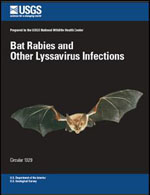Bat Rabies and Other Lyssavirus Infections offers readers an overview of the virus variants that cause bat rabies, and geographical patterns in occurrence of this disease. The section Species Susceptibility describes infection rates and trends among bats, humans, and other animals. Disease Ecology considers the biological and environmental dynamics of the disease in various species of bats. Points to Ponder: Interspecies Interactions in Potential Bat Rabies Transmission Settings discusses the narrowing interface of bat colonies and human society and how humans and domestic animals play a role in transmission of bat rabies. Disease Prevention and Control outlines how to limit exposure to rabid bats and other animals. Appendixes include extensive tables of reported infections in bat species and in humans, and a glossary of technical terms is included.
The author, Denny G. Constantine, helped define rabies infection in insect-eating bats and has investigated bat rabies ecology for more than half a century. He has authored more than 90 papers during the course of his career and is widely considered to be the world's foremost authority on the disease. Currently, Dr. Constantine is a public health officer emeritus and veterinary epidemiologist for the California Department of Health Services Viral and Rickettsial Disease Laboratory. Milt Friend, first director of the USGS National Wildlife Health Center, wrote the foreword. David Blehert, a USGS microbiologist who is investigating the emergence and causes of bat white-nose syndrome, edited the volume.
Bat Rabies is intended for scholars and the general public. Dr. Constantine presents the material in a simple, straightforward manner that serves both audiences. The goal of the author is to increase people's understanding of both bat and disease ecology and also provide a balanced perspective on human risks pertaining to bat rabies.


